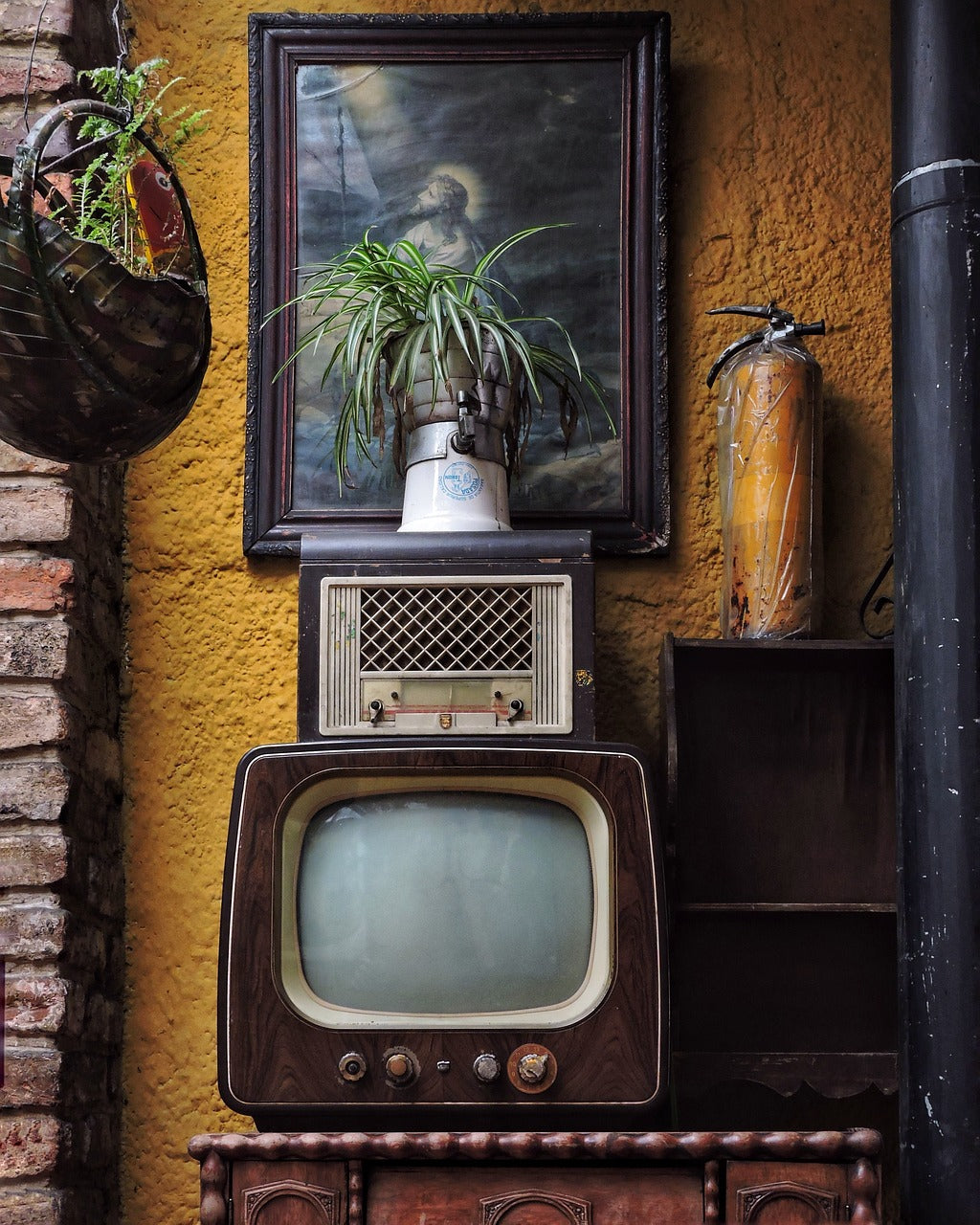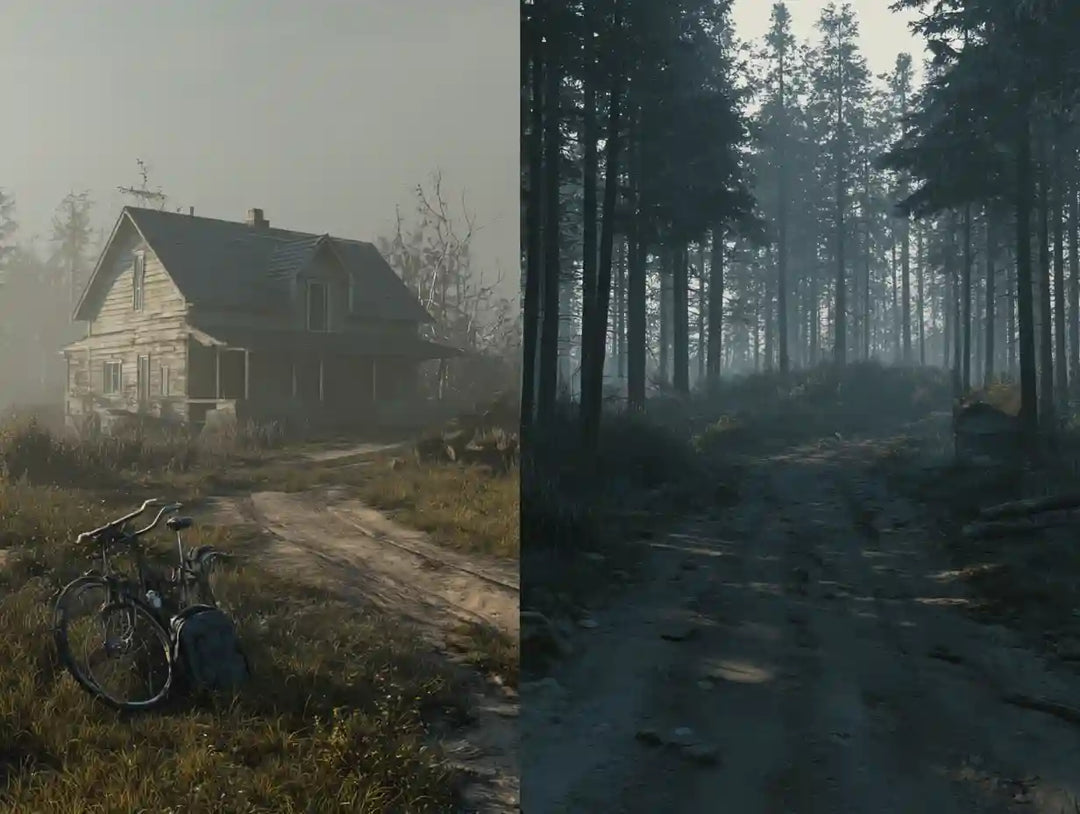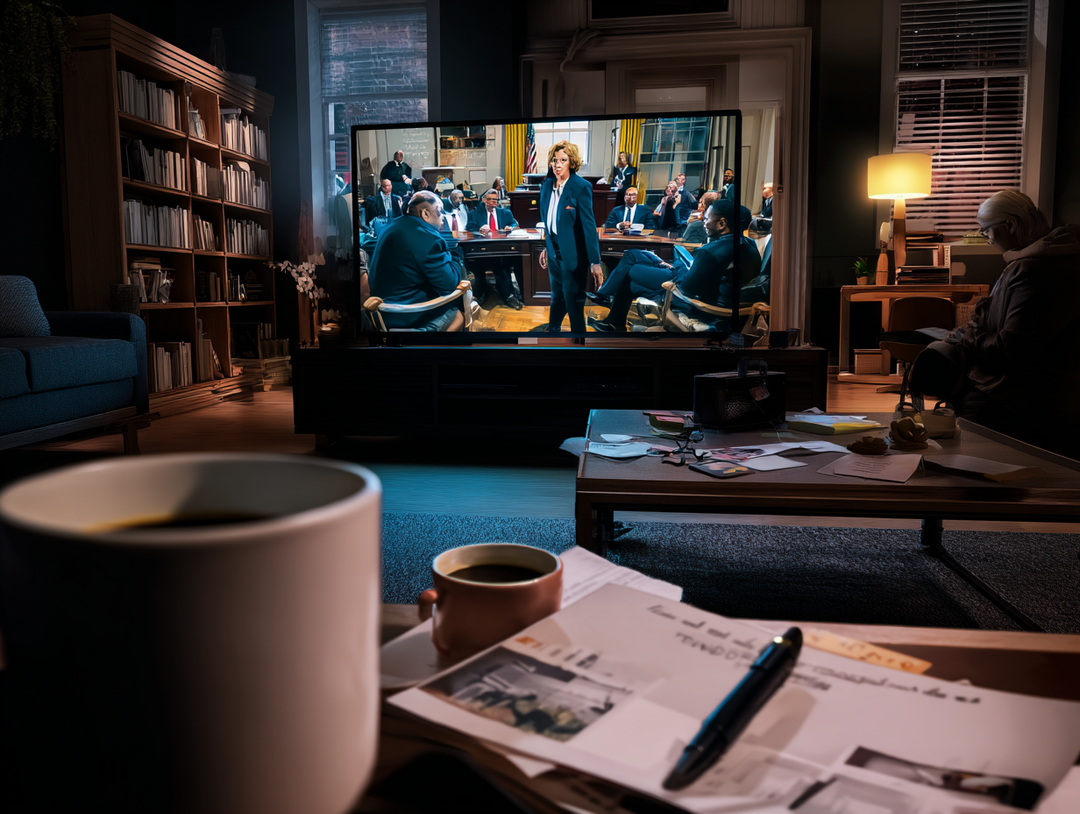
Imagine hosting a thrilling murder mystery game set in the 1940s or 1950s, where your home becomes the perfect backdrop for intrigue and suspense. From the muted elegance of wartime practicality to the bold, futuristic designs of post-war optimism, these decades offer rich design inspiration to transport your guests into another era. Whether you're interested in the modern, futuristic and sleek, mid-century elegance or interested in the more vintage ideas such as floral wallpaper, by recreating the decor of these iconic periods you can enjoy vintage elegance and add a touch of realism to your themed murder mystery party. In this blog, we'll explore the key elements of 1940s and 1950s décor, and discuss how you can bring these styles into your home.
The 1940s and 1950s was a time of great change, particularly in the world of interior design, with World War II marking a significant shift in available resources and post-war optimism introducing bright colours and futuristic motifs. In this blog, we'll explore the defining characteristics of both decades and provide some simple, modern suggestions for how you can bring these vintage vibes into your home today.

1940s Decor: Beauty in Restraint
The 1940s were defined by practicality and a certain level of austerity due to World War II and its lingering effects. With materials like metals, fabrics, and even certain types of wood in short supply, home decor took on the "make do and mend" mentality. While these limitations shaped the aesthetic of the time, they also inspired creativity.
War Influence and Material Shortages
During the war, shortages meant that many families had to be inventive with their decor. This often led to furniture being repurposed, and new pieces designed with both function and durability in mind. Furniture styles were simple but sturdy, reflecting a need for practicality over luxury.
Bringing it to the Present: Why not have a look for second-hand or vintage furniture that has a story? Look for a classic wooden table or chair at a market or in an antique shop. By restoring and repainting these pieces you can give them a new life.
Muted Colour Palette
The muted, soft colour schemes of the 1940s helped create a calming atmosphere amidst the uncertainty of wartime. Beige, olive green, cream, and pale blue were frequently used, and floral patterns – while popular – were often subtle and subdued.
Bringing it to the Present: Consider painting your walls in a gentle, neutral tone such as cream or beige and then add a soft floral print, curtains or cushions for a subtle design without overwhelming the space.
Functional Furniture
With limited resources, furniture was built with functionality in mind. Multi-purpose pieces, like built-in shelving, fold-out tables, and storage units, were common in smaller homes where space needed to be maximised.
Bringing it to the Present: In today's minimalist trends, functionality continues to be popular. Furniture with hidden storage or pieces that can serve multiple purposes, such as a bed with built-in drawers or foldable tables. Streamlined, practical designs are both stylish and useful for modern living.
Art Deco Influence
Though the Art Deco movement of the 1920s and 1930s had begun to fade by the 1940s, some of its elements remained, particularly with lighting and smaller decorative pieces. Geometric shapes, bold lines, and chrome accents brought a sense of sophistication to otherwise modest interiors.
Bringing it to the Present: Look for modern lighting fixtures or mirrors that incorporate geometric shapes or chrome. Adding a sleek, Art Deco-inspired lamp or a mirror can add a touch of vintage glamour to any room.
Wallpaper
Wallpaper was a popular way to add personality to homes in the 1940s, often featuring floral or abstract patterns. This was a quick and relatively affordable way to brighten up spaces that might otherwise feel too drab due to wartime shortages.
Bringing it to the Present: Wallpaper has made a big comeback in recent years and adding a vintage-inspired floral design on a feature wall in your living room or bedroom can look nice and can add texture and interest to a room.
Natural Materials
Wood, particularly darker varieties like mahogany and walnut, were key materials in 1940s furniture.
Bringing it to the Present: Add darker wood furniture pieces, such as a walnut coffee table or a mahogany bookshelf to your room, these rich, natural tones bring a touch of elegance to a room and work beautifully with a more neutral colour palette.
1950s Decor: Optimism, Colour, and the Atomic Age

In the 1950s, the world was recovering from the war, and with prosperity came a burst of energy and optimism. The decor of this era began to reflect this newfound sense of freedom, with vibrant colours, bold designs, and futuristic influences. The space race and advances in technology impacted the aesthetics of this decade, bringing a sense of fun and modernity into the home.
Bright Colours and Pastels
The 1950s were all about colour. Homes featured bold, cheerful colours like turquoise, cherry red, mustard yellow, and pastel shades such as pink, mint green, and baby blue. These bright colours reflected the era’s optimism and forward-looking mentality.
Bringing it to the Present: Add some pastel cushions, or colourful kitchen appliances to your home to bring the charm of 1950s into your home.
Synthetic materials
With the introduction of materials like Formica and vinyl, home decor in the 1950s embraced easy-to-clean, durable options that were affordable and stylish. Formica was used for countertops and tables, while vinyl was common in flooring and furniture.
Bringing it to the Present: While vinyl furniture may not be as popular today, Formica-style finishes are. Chances are your home already has some of the things but if not then why not add a Formica table with chrome legs to your kitchen or vinyl floors in your kitchen or bathroom?
Atomic Age and Futuristic Designs
The 1950s decor was heavily influenced by space exploration, leading to some futuristic designs.
Bringing it to the Present: Atomic-style accessories are still a quirky and fun addition to modern homes and different wallpaper or textiles with atomic or abstract patterns can bring a touch of 1950s futuristic charm into your space.
Streamlined Furniture
Mid-century modern design began to gain popularity in the 1950s, and with it came sleek, streamlined furniture. Scandinavian-inspired pieces with clean lines and tapered legs became a defining feature of the era.
Bringing it to the Present: Mid-century modern furniture is as popular today as it was in the 1950s. To give your home a retro twist, invest in a sleek, Scandinavian-inspired sofa or sideboard. Look for pieces with wooden legs and simple lines.
Bold Patterns
Geometric patterns, polka dots, and abstract designs were everywhere in the 1950s, from upholstery and curtains to wallpaper and rugs.
Bringing it to the Present: Bold patterns are a great way to bring some energy into a room. You can get geometric or polka-dots on cushions, rugs, or curtains to bring the 1950s into your modern home.
Kitsch and Themed Rooms
Themed rooms became popular in the 1950s, with many homes embracing kitschy decor inspired by everything from Hawaiian culture to cowboy motifs.
Bringing it to the Present: Today, a little kitsch can go a long way. You don't need to dedicate a whole room to a theme, but you can add a few playful elements like tiki mugs, vintage postcards, or novelty ceramics to add a touch of fun. These can be a quirky conversation starter without overwhelming your home.
Wall Art and Accessories
In the 1950s, home decor was all about personal expression, and wall art played a major role. Sunburst mirrors, framed prints of modern art, and accessories like ceramic figurines were popular ways to add personality to a space.
Bringing it to the Present: Look for vintage-style artwork with abstract designs or modern prints. These accessories will give your home a playful and creative atmosphere while paying homage to the 1950s love for unique, personal touches.
The decor styles of the 1940s and 1950s were very different and offer a wealth of inspiration for today’s interiors. Whether you're drawn to the muted elegance and practicality of 1940s design or the vibrant, futuristic flair of the 1950s, there are countless ways to bring these mid-century styles into your home. The 1950s in particularly ius still hugely popular today with recreations and reproductions appearing in shops all over the world and by blending elements such as timeless furniture, classic colour palettes, and quirky accessories, you can create a space that feels fresh yet nostalgic.
Whether you are wanting to restyle your room for your own enjoyment or whether you want a temporary change to inspire your next murder mystery these ideas can help you achieve the desired look. Remember Masters of Mystery have a wide variety of games, themed and eras for you to choose from. Whether you want to go for a 1940s mystery, our 1950s Broadway glamour game or something different, there’s lots to choose from.








